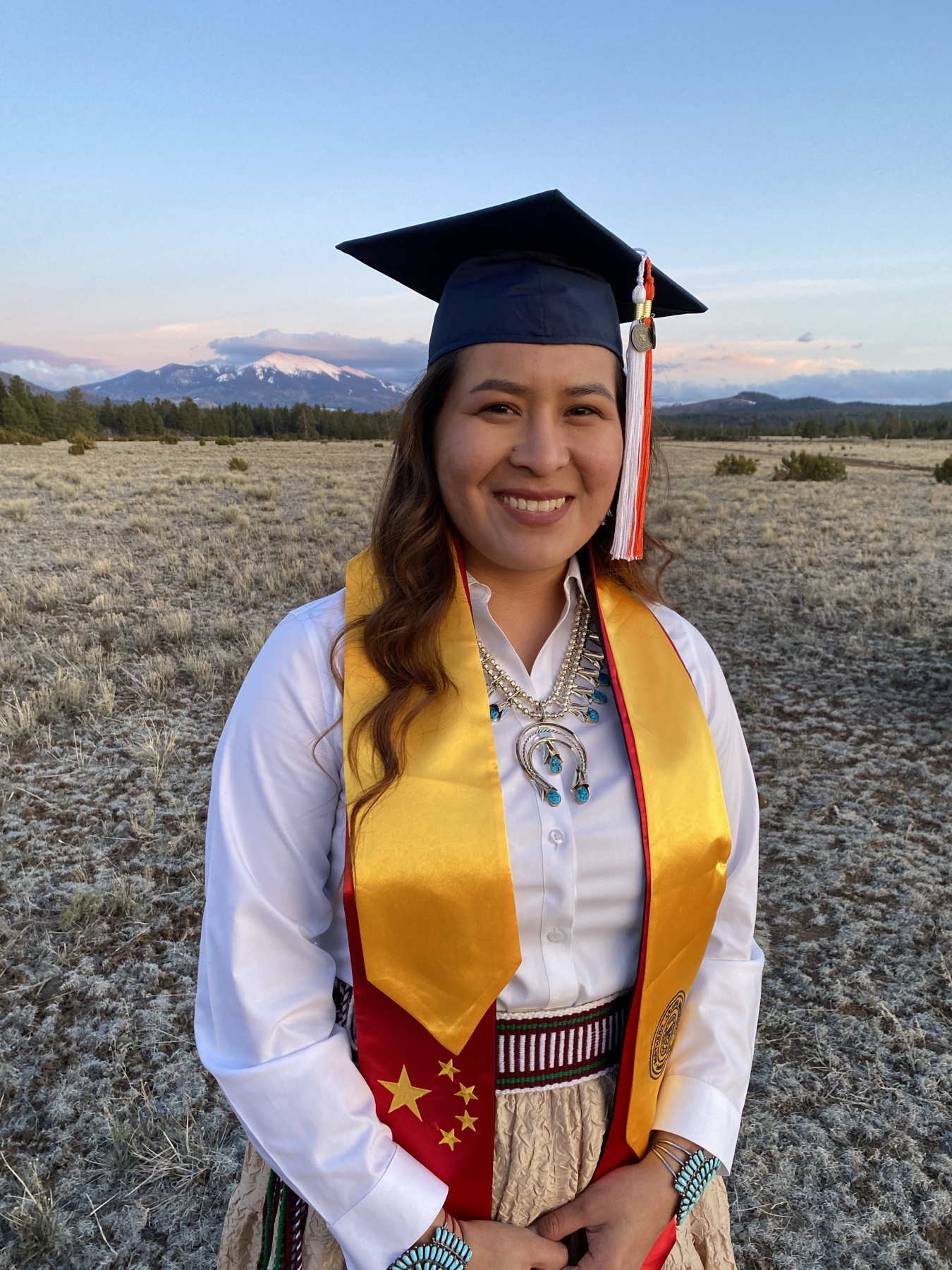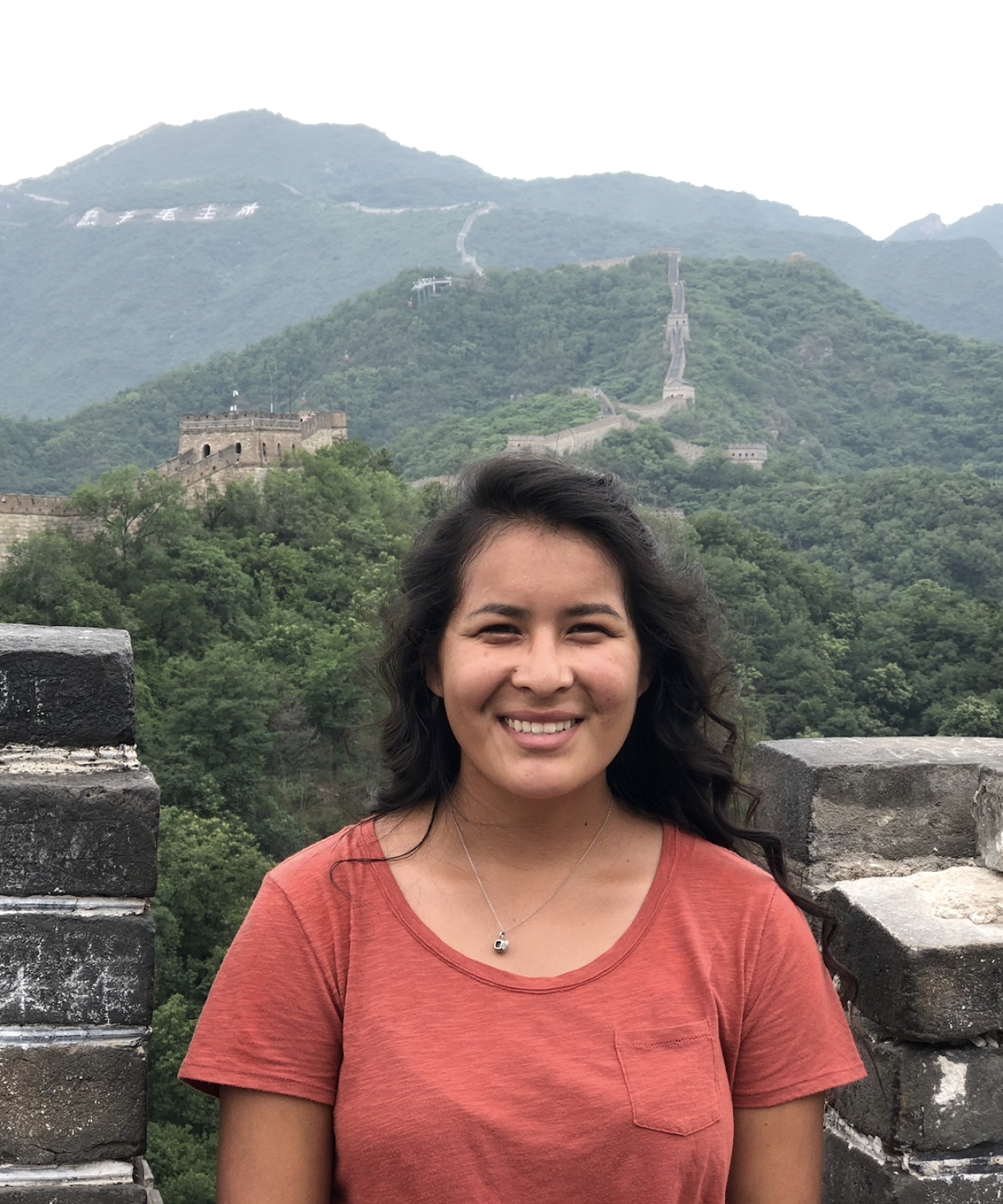Jane Sandoval enters her master's program this fall with years of energy experience, including her work in DOE's 2020 Collegiate Wind Competition.
August 26, 2020Jayne Sandoval has a bit of a travel bug.
Originally from Ute Pass Valley on the Navajo reservation in northern Arizona, she completed internships all over the United States as an undergrad at Northern Arizona University (NAU) and even spent a year studying at Shantou University, in China’s Guangdong province. Sandoval graduated from NAU in May with a double major in mechanical engineering and comparative cultural studies. This fall, she’ll begin a Master of Science in energy engineering at National Cheng Kung University in Taiwan through the Fulbright Scholar Program.
Sandoval enters her master’s program with two important advantages: One, thanks to her year in China, she speaks some Chinese, and two, she already has several years of energy experience under her belt, including her work in the U.S. Department of Energy’s (DOE’s) Collegiate Wind Competition (CWC).

Jayne Sandoval, who graduated from Northern Arizona University last spring, credits her participation in the 2020 Collegiate Wind Competition with helping her land a summer internship with sPower, an independent power producer. Image: Jayne Sandoval
Sandoval joined CWC’s Team NAU for the 2020 competition as part of the capstone coursework for her engineering major. She focused on the Project Development contest and used the wind farm siting software Openwind to determine the impact Team NAU’s wind project design would have on local wildlife.
In fact, Sandoval credits her work in the CWC with helping her land the internship she’ll complete this summer before she leaves for Taiwan.
As part of their research for Team NAU’s Project Development plan, Sandoval and her teammates attended a permitting forum for a local wind farm. At the forum, Sandoval met the permitting manager at sPower, an independent power producer based in Salt Lake City. Later, NAU ran a story about Sandoval’s accomplishments, which the local news station picked up. Shortly after that, the permitting manager at sPower offered her a summer internship.
“He emphasized my participation in the CWC as a reason for them to hire me, because I already had experience designing wind projects and especially with the permitting process,” Sandoval said.
During her internship, Sandoval assisted with the wind and solar development permitting process on the Navajo reservation—a project she was particularly excited for because she knew it would enhance energy options in a region where many homes lack access to basic amenities.
“With everything going on right now, the Navajo Nation would probably be in better shape if we had resources like electricity and running water,” said Sandoval. “It’s hard to bring those resources to homes on the reservation using existing infrastructure because of the cost, which is where renewable energy can help. But wind projects haven’t really been done on the reservation, and the Navajo Nation is a sovereign state, which means their permitting process is a challenge. I think the experience I got from the CWC and my connection to the reservation helped.”

Sandoval will build on the knowledge she gained from CWC when she begins her master’s program in energy engineering in Taiwan this fall. Image: Jayne Sandoval
As the summer draws to a close, Sandoval is looking forward to her next adventure—the start of her master’s program in Taiwan. She’s excited to not only deepen her knowledge of renewable energy but to become more fluent in Chinese as well.
“Getting accepted [to this program] felt like everything had lined up perfectly,” she said. “I already speak some Chinese, and this program is dedicated to renewable energy engineering. It goes into so many things that I want to learn, mostly so I can bring that knowledge back home. Knowing the impact I’ll be able to make is really exciting. And the cultural component is really important, too.”
Much as Sandoval loves to travel, all this globe-trotting eventually leads back home. When she finishes her master’s program, she hopes to continue working in wind energy, ideally at the National Renewable Energy Laboratory, which facilitates the CWC on behalf of DOE. Ultimately, Sandoval wants to build knowledge and connections that she can use to help improve quality of life on the Navajo reservation.
Her advice for anyone interested in a career in renewable energy? Just get involved.
“Renewable energy is a newer field and there’s still a lot to learn about it,” she said. “The more people there are working in renewable energy, the faster we can develop technology that will save the world.”

